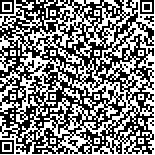| 引用本文: |
黄勤,陈英华,李俊峰,王浩宇,孙玮,秦瑞琦,苏晓庆,孙兴华.醒神通经导气针法联合康复治疗脑卒中后偏瘫的临床疗效观察[J].湖南中医药大学学报,2023,43(1):111-116[点击复制] |
|
| |
|
|
| 本文已被:浏览 3084次 下载 887次 |
| 醒神通经导气针法联合康复治疗脑卒中后偏瘫的临床疗效观察 |
| 黄勤,陈英华,李俊峰,王浩宇,孙玮,秦瑞琦,苏晓庆,孙兴华 |
| (黑龙江中医药大学, 黑龙江 哈尔滨 150040;黑龙江中医药大学附属第一医院, 黑龙江 哈尔滨 150040) |
| 摘要: |
| 目的 观察醒神通经导气针法联合康复治疗脑卒中后偏瘫的临床疗效。方法 将符合纳入标准的105例患者随机分为联合组、针刺组和康复组,每组35例。联合组采用醒神通经导气针法联合康复疗法治疗,针刺组采用醒神通经导气针法治疗,康复组应用Bobath技术神经生理疗法治疗。比较治疗前后美国国立卫生研究院卒中量表(national institute of health stroke scale,NIHSS)评分、肌张力评定(改良Ashwoth)、Fugl-Meyer评估表(fugl-meyer assessment scale,FMA)运动功能评分、血清白细胞介素-6(interleukin-6,IL-6)、肿瘤坏死因子-α(tumor necrosis factor-α,TNF-α)含量变化及临床疗效。结果 联合组有效率(91.4%)明显高于针刺组(80.0%)、康复组(77.1%)(P<0.05)。治疗后,3组NIHSS评分、肌张力Ashwoth分级评定、FMA运动功能评分较治疗前均明显改善(P<0.001),血清中IL-6含量均下降(P<0.001),康复组和针刺组TNF-α含量较治疗前差异无统计学意义(P>0.05),联合组TNF-α含量较治疗前明显下降(P<0.001);且联合组在上述指标改善程度均优于针刺组、康复组(P<0.05或P<0.01)。结论 醒神通经导气针法联合康复治疗脑卒中后偏瘫,能够明显改善患者的神经功能缺损症状、改善肌张力、提高肢体运动功能及下调血清IL-6、TNF-α水平,且较单独针刺治疗、康复治疗效果更好,具有临床推广价值。 |
| 关键词: 脑卒中 偏瘫 针刺 醒神通经导气针法 康复 炎性因子 神经功能 肌张力 |
| DOI:10.3969/j.issn.1674-070X.2023.01.017 |
| 投稿时间:2022-10-16 |
| 基金项目:国家自然科学基金科研项目(82074530);黑龙江省自然科学基金科研项目(ZD2021H007)。 |
|
| Clinical efficacy of Xingshen Tongjing Daoqi Acupuncture combined with rehabilitation in treating post-stroke hemiplegia |
| HUANG Qin,CHEN Yinghua,LI Junfeng,WANG Haoyu,SUN Wei,QIN Ruiqi,SU Xiaoqing,SUN Xinghua |
| (Heilongjiang University of Chinese Medicine, Harbin, Heilongjiang 150040, China;The First Hospital of Heilongjiang University of Chinese Medicine, Harbin, Heilongjiang 150040, China) |
| Abstract: |
| Objective To observe the clinical efficacy of Xing Shen Tong Jing Dao Qi Acupunctrue combined with rehabilitation in treating post-stroke hemiplegia. Methods The 105 patients who met the inclusion criteria were randomly divided into combined group, acupuncture group and rehabilitation group, with 35 in each group. The combined group was treated with the Xingshen Tongjing Daoqi Acupuncture combined with rehabilitation, the acupuncture group was treated with the Xingshen Tongjing Daoqi Acupuncture and the rehabilitation group was treated with the neurophysiological therapy by the Bobath technique. The national institute of health stroke scale (NIHSS) scores, myotonia assessment (modified Ashwoth) scores, Fugl-Meyer assessment scale (FMA) scores, motor function scores, serum interleukin-6 (IL-6), tumor necrosis factor-α (TNF-α) levels and clinical efficacy were compared before and after treatment. Results The effective rate of combined group (91.4%) was significantly higher than that of acupuncture group (80.0%) and rehabilitation group (77.1%) (P<0.05). After treatment, the NIHSS score, Ashworth grading of muscle tension and FMA motor function scores in the three groups were significantly improved compared with those before treatment (P<0.001), and the content of IL-6 in serum was reduced (P<0.001). The content of TNF-α in rehabilitation group and acupuncture group had no significant difference compared with that before treatment (P>0.05); the content of TNF-α in combination group was significantly lower than that before treatment (P<0.001); the improvement of the above indexes in the combined group was better than that in the acupuncture group and the rehabilitation group (P<0.05 or P<0.01). Conclusion The combination of Xingshen Tongjing Daoqi Acupuncture and rehabilitation can significantly improve the neurological deficit symptoms, muscle tension and limb motor function, as well as lower serum IL-6 and TNF-α in patients with post-stroke hemiplegia. It is more effective than acupuncture alone or rehabilitation therapy alone, and is thus worthy to be clinically promoted. |
| Key words: stroke hemiplegia acupuncture Xingshen Tongjing Daoqi Acupuncture rehabilitation inflammatory factor nerve function muscle tension |
|

二维码(扫一下试试看!) |
|
|
|
|




